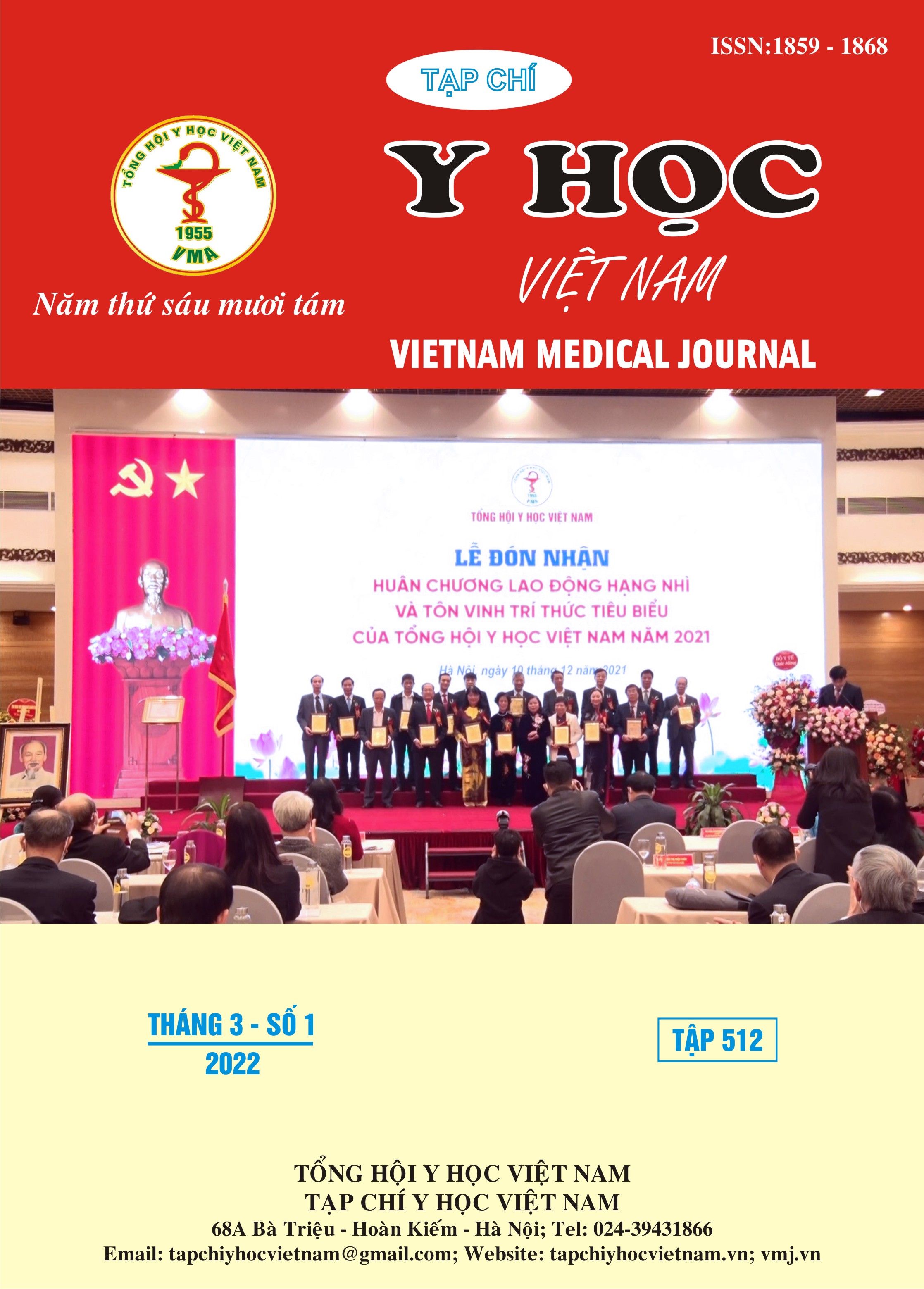SCN5A GENE MUTATIONS AND RELATED FACTORS IN BRUGADA SYNDROME PATIENTS IN VIETNAM
Main Article Content
Abstract
Introduction: Brugada syndrome is an inherited cardiac arrhythmia that causes sudden death. Mutations in SCN5A gene, which codes for sodium channels, have been identified as the cause and account for the highest frequency, about 20-25% in the Brugada syndrome (BrS) patients. The lack of relevant information about the clinical, subclinical characteristics and SCN5A mutation status in Vietnam has partly limited the quality of care as well as the implementation of studies to improve the effectiveness of disease pathology management. Objectives: To investigate the frequency of mutations in SCN5A gene and its association with some clinical and subclinical characteristics in BrS patients. Subjects and methods: using the case series study to survey on clinical, subclinical characteristics and mutation frequency of SCN5A gene in BrS patients in hospitals in Ho Chi Minh City and Hanoi. To comment on the relationship between traits and gene mutations found. The disease was diagnosed according to the European Heart Rhythm Society 2015 criteria. Mutations were identified by Sanger sequencing technique. Results: There were 70 patients participating in the study. SCN5A mutation frequency is 25,7%, including 13 types of mutations, of which 7 types have been published in the literature. 80% is a missense mutation; mutations are concentrated in the transmembrane regions (42,1%) and transmembrane linkers (36,8%) on the protein. When predicting pathogenicity by multiple bioinformatic tools, there are 53,8% pathogenic mutations; 30,8% likely pathogenic mutations. There are the SCN5A mutation-positive group with more patients with sudden death of a relative under 45 years old than the mutation-negative group (p=0,029); who has a higher rate of ventricular arrhythmias (p=0.049); with a higher rate of positive flecanide test than the mutation-negative group (p=0,034). There may be an association between SCN5A mutation status and family factors of sudden death under 45 years old (OR 8,4; p = 0,0005); and with a positive result of the flecanide test (OR 7,1; p = 0,032). Conclusion: The SCN5A mutation frequency in BrS patients in Vietnam has been determined, and 5 new types of mutations have not been published on biological databases. The study also gives initial hints about the association between some clinical and subclinical features with SCN5A gene mutations in BrS patients.
Article Details
Keywords
Brugada syndrome, SCN5A gene
References
2. Kapplinger, J.D., et al., An international compendium of mutations in the SCN5A-encoded cardiac sodium channel in patients referred for Brugada syndrome genetic testing. 2010. 7(1): p. 33-46.
3. Offerhaus, J.A., C.R. Bezzina, and A.A.J.N.R.C. Wilde, Epidemiology of inherited arrhythmias. 2020. 17(4): p. 205-215.
4. Members, A.T.F., et al., 2015 ESC Guidelines for the management of patients with ventricular arrhythmias and the prevention of sudden cardiac death: The Task Force for the Management of Patients with Ventricular Arrhythmias and the Prevention of Sudden Cardiac Death of the European Society of Cardiology (ESC) Endorsed by: Association for European Paediatric and Congenital Cardiology (AEPC). 2015. 17(11): p. 1601-1687.
5. Richards, S., et al., ACMG Laboratory Quality Assurance Committee Standards and guidelines for the interpretation of sequence variants: a joint consensus recommendation of the American College of Medical Genetics and Genomics and the Association for Molecular Pathology. 2015. 17(5): p. 405-424.
6. Probst, V., et al., Long-term prognosis of patients diagnosed with Brugada syndrome: results from the FINGER Brugada Syndrome Registry. 2010. 121(5): p. 635-643
7. Rizzo, A., et al., Ajmaline testing and the Brugada syndrome. 2020. 135: p. 91-98.
8. Cerrone, M., et al., Beyond the one gene–one disease paradigm: complex genetics and pleiotropy in inheritable cardiac disorders. 2019. 140(7): p. 595-610.
9. Kapplinger, J.D., et al., Enhanced classification of Brugada syndrome–associated and long-QT syndrome–associated genetic variants in the SCN5A-encoded Nav1. 5 cardiac sodium channel. 2015. 8(4): p. 582-595.


